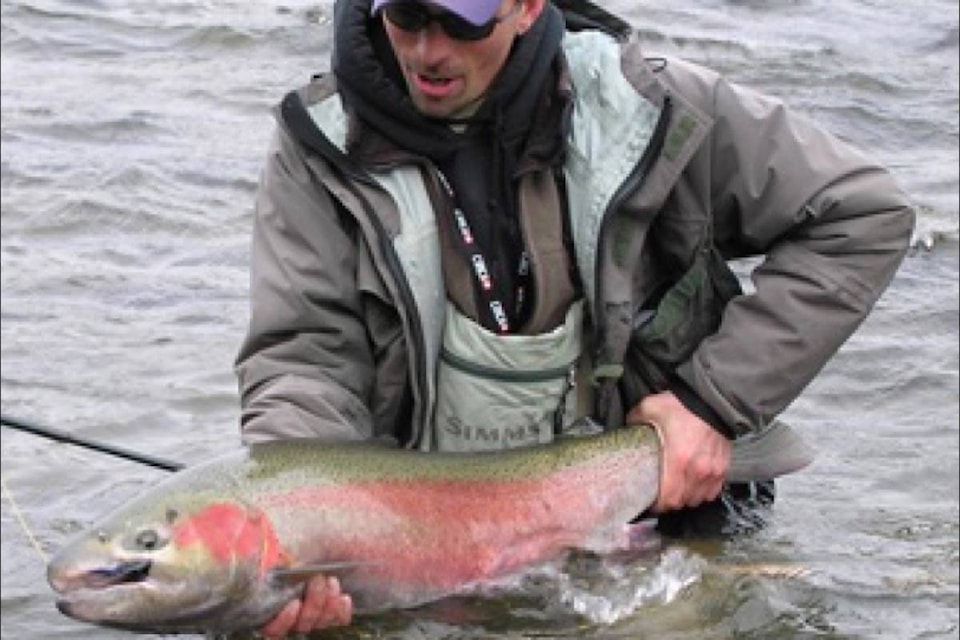The provincial government has closed this year’s Thompson and Chilcotin Steelhead Trout fisheries, citing data which suggests fewer than 200 Steelhead will return to the Thompson River and fewer than 50 will return to the Chilcotin River in 2018. The numbers are similar to last year’s figures, which saw 177 fish return to the Thompson and 58 to the Chilcotin. In 1985 more than 7,000 Steelhead returned to the Thompson.
Earlier this year, the Committee on the Status of Endangered Wildlife in Canada (COSEWIC) concluded that the two populations of sea‐going Steelhead breeding in the Thompson and Chilcotin river systems are at imminent risk of extinction. Both populations were assessed as Endangered, and COSEWIC has recommended an emergency listing order under the federal Species at Risk Act, although the federal government has not yet taken this step.
Mike Simpson, the senior regional manager of the Fraser Basin Council, says most people will probably see the shutdown as a good thing. “The mortality rate [under catch and release] has been said to be as low as one per cent, but we hear from others such as First Nations people that it’s much higher. The consensus is to stop anything that impacts them.”
Spences Bridge has long been a mecca for sports fishermen eager to try their hand at catching a Steelhead in the world-famous Thompson Steelhead run, and the town’s residents and businesses have depended on the money generated by hundreds of visitors a year. Longtime Spences Bridge resident and TNRD Area “I” director Steve Rice has been monitoring, and working on, the Steelhead situation for many years, and wonders if the fishery will ever open again.
“Will it ever come back? They’ve had salmon runs close in the States that never reopened. That’s the worst case scenario. We just don’t know where we go from here.”
Rice says that given the quality of the fishermen who come to fish for Steelhead, he would put the mortality rate from the sports fishery at the low end of the scale. “They’re the best fishermen in the world. And if our incredible Steelhead fishermen aren’t there to patrol the river, will it result in more mortality? Will poachers come in?”
Rice says the provincial government has told him that conservation officers will be on the river this year, but wonders how long that will continue. “If the closure becomes an annual event, will the province keep providing funding? There are questions without a lot of answers.”
Simpson says the speed with which COSEWIC conducted its assessment and submitted its report—less than two months—is unique. “Usually that takes a year or more. Their ability to do an emergency assessment speaks volumes about the urgency of the situation.” While Simpson notes that there is no silver bullet that will solve the issue, Rice says that changes to the Chum fishery could help matters.
“The Chum season opens in the middle of the peak Steelhead run in mid-October. The federal government has added the possibility of rolling closures of the Chum fishery to regulations. It’s now a tool they have, and we’ll know by the end of October if they decide to roll the opening.”
Rice says that the Steelhead mortality rate from the Chum fishery is the same in one year as in 10 years of sports fishing.
“The peak of the Steelhead run is around October 20, when the Chum season opens. If that could be rolled back to early November, it would be much better for us.”
Rice says that the closure of the Steelhead fishery will have a huge economic impact on Spences Bridge, which for many years has depended on the income from the sports fishermen who flock to the area when the summer tourist season is over.
“Ideally the run would be open from October through December. But I know of one business that has decided to close over the winter, some places have decided to go seasonal, and the hours at The Packing House [which Rice and his wife own and run] will probably change.
“Places will suffer. The question is, will we close this world class fishery forever, or can we bring it back?”
editorial@accjournal.ca
Like us on Facebook and follow us on Twitter
